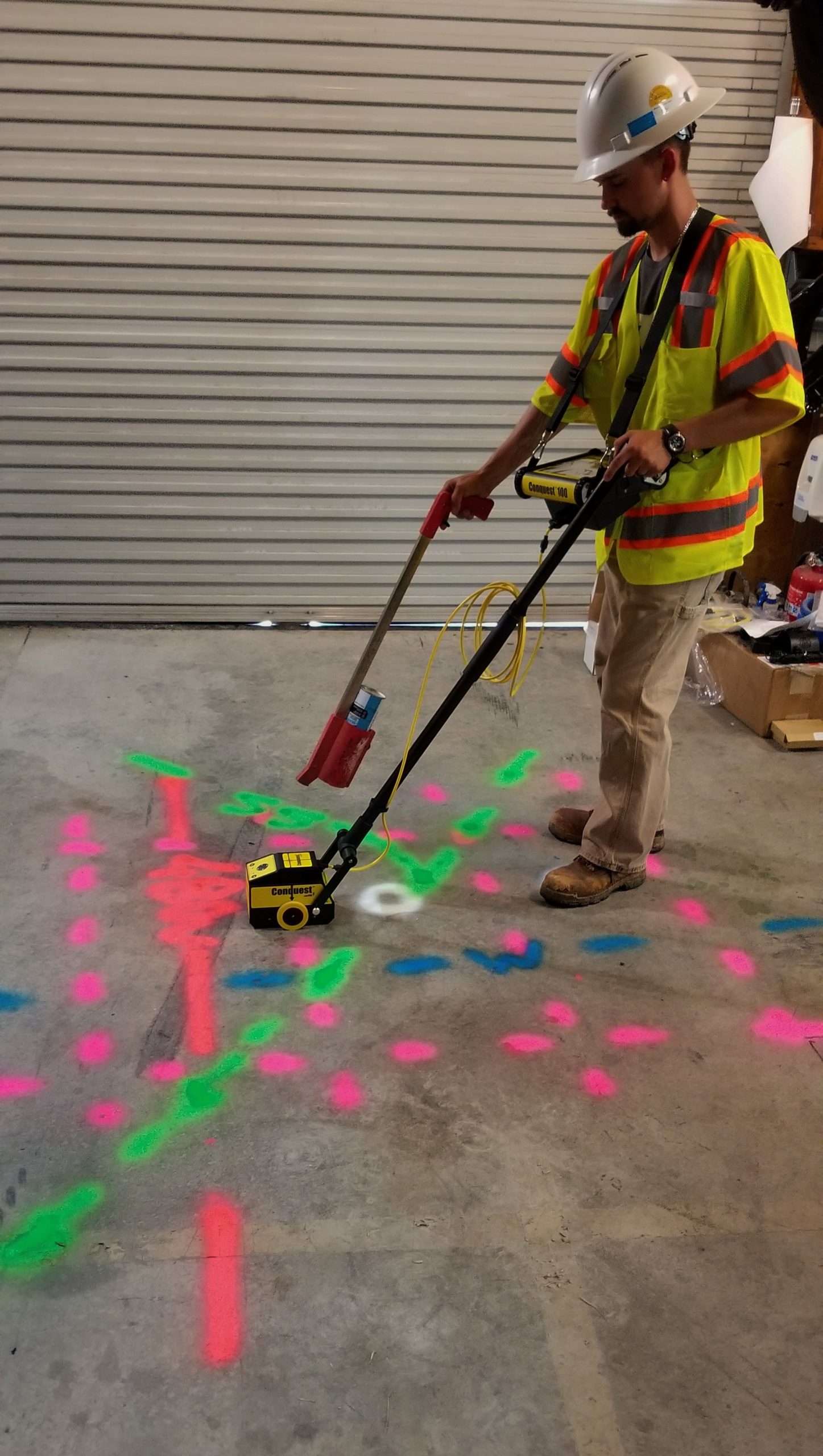RainierGPR Concrete Scanning: Ensuring Security and Performance in Building
RainierGPR Concrete Scanning: Ensuring Security and Performance in Building
Blog Article
Discovering the Secret Benefits of Concrete Scanning in Construction Projects
In the world of modern-day building and construction practices, the use of concrete scanning modern technology has become an essential device for making certain job performance and architectural integrity. From boosting security measures to properly finding utilities hidden beneath the surface area, the benefits of concrete scanning are diverse. The capacity to improve job timelines and decrease expenses while protecting existing frameworks is a testament to the worth this modern technology brings to the building and construction market. As we look into the nuanced benefits of concrete scanning, it comes to be noticeable that its influence expands far past surface-level assessments, using a glimpse right into the elaborate internet of advantages waiting to be discovered.
Boosted Precaution
Making use of sophisticated concrete scanning modern technology enhances precaution on construction sites by offering exact discovery of prospective risks hidden under the surface. This innovation allows construction teams to recognize rebar, avenues, post-tension cables, and various other obstructions before excavation or boring, substantially minimizing the threat of crashes. By pinpointing these components exactly, employees can prevent harmful important architectural parts, hence stopping injuries, delays, and costly fixings.
In addition, concrete scanning plays an important function in guaranteeing the honesty of existing frameworks during developments or restorations. By spotting weak points, voids, or degeneration within concrete components, engineers can resolve these concerns proactively, improving the general safety and security and durability of the structure. This aggressive approach not only mitigates the risk of structural failings however also decreases the capacity for crashes triggered by unpredicted structural deficiencies.
Basically, the execution of concrete scanning technology offers as a positive security action that safeguards both construction employees and the structural integrity of buildings, ultimately contributing to the general success and performance of building and construction projects. - RainierGPR Concrete Scanning
Accurate Detection of Energies
Concrete scanning innovation assists in precise identification of underground utilities, improving building and construction website safety and security and efficiency. Precise discovery of utilities is vital in construction projects to protect against expensive damages, task hold-ups, and most importantly, make certain the security of workers and the public. By utilizing advanced scanning modern technologies such as ground-penetrating radar (GPR) and electromagnetic induction, building teams can draw up the place of hidden pipelines, wires, and other utilities with high levels of precision.

Time and Price Performance

Concrete scanning technology enables building and construction teams to precisely locate rebar, post-tension wires, and other ingrained objects within concrete structures. This exact information helps in avoiding expensive mistakes such as unexpected damages to crucial components during drilling, reducing, or coring tasks. In addition, by recognizing prospective threats in advance, the requirement for costly repairs or rework due to this contact form damages can be decreased, leading to cost savings for the task.

Moreover, the ability to swiftly and precisely detect energies under the surface area without creating any type of damages not just conserves time but also prevents costly disruptions to existing infrastructure. In general, the time and price effectiveness advantages of concrete scanning make it a very useful tool for enhancing building and construction project administration and execution.
Conservation of Structural Honesty
Preserving the architectural integrity of buildings and framework is extremely important in ensuring long-term stability and safety and security. Concrete scanning plays a vital duty in this conservation procedure by enabling construction experts to determine prospective dangers to the structural integrity of a structure or infrastructure before they intensify right into major concerns. Via the usage of sophisticated scanning modern technologies such as ground-penetrating radar (GPR) and electromagnetic induction, construction teams can non-invasively evaluate the problem of concrete frameworks, locate rebar, post-tension cables, and other embedded aspects, and recognize any gaps, splits, or damage within the concrete.
Improved Project Preparation
In order to make sure the effective implementation of building and construction tasks, meticulous interest to information and detailed preparation are essential components that stem from an extensive understanding of the architectural problems determined through concrete scanning. Eventually, integrating concrete scanning into the project preparation phase enhances sychronisation among team members, promotes positive analytical, and adds to the effective distribution of building and construction jobs within budget plan and schedule constraints.
Final Thought
In conclusion, concrete scanning uses many benefits in construction jobs. By enhancing safety and security steps, properly finding utilities, boosting time and cost efficiency, maintaining architectural stability, and aiding in job preparation, concrete scanning confirms to be a crucial tool for successful job implementation. Its capacity to minimize dangers, boost effectiveness, and guarantee task stability makes it a crucial asset for building specialists.
In the world of contemporary construction methods, the application of concrete scanning technology has actually emerged as a pivotal tool for making certain task effectiveness and structural honesty.Concrete scanning innovation makes it possible for building and construction groups to properly situate see it here rebar, post-tension cable televisions, and other embedded objects within concrete structures. With the use of sophisticated scanning innovations such as ground-penetrating radar (GPR) and electro-magnetic induction, building teams can non-invasively evaluate the condition of concrete frameworks, find rebar, post-tension wires, and other embedded aspects, and recognize any type of gaps, fractures, browse around here or damage within the concrete.
In order to make certain the successful implementation of building and construction jobs, careful interest to detail and comprehensive preparation are vital parts that stem from an extensive understanding of the structural problems recognized with concrete scanning. Inevitably, integrating concrete scanning into the project preparation phase enhances sychronisation among team participants, fosters aggressive analytical, and contributes to the effective shipment of building tasks within budget plan and routine constraints.
Report this page